A deer’s shinbones, the shell of a sea turtle, pieces of coral, beans and peas, dried sea oak, swim rings, chunks of Styrofoam, an umbrella handle, a soy sauce dispenser. . . The beach is a destination for all kinds of drifting things.
“Welcome ashore! Glad you made it all this way! That’s how I feel when I find something from somewhere unknown that for some reason came drifting my way. For me, driftage is fascinating because it’s the very last form of an object. It triggers in me a kind of parental love.”
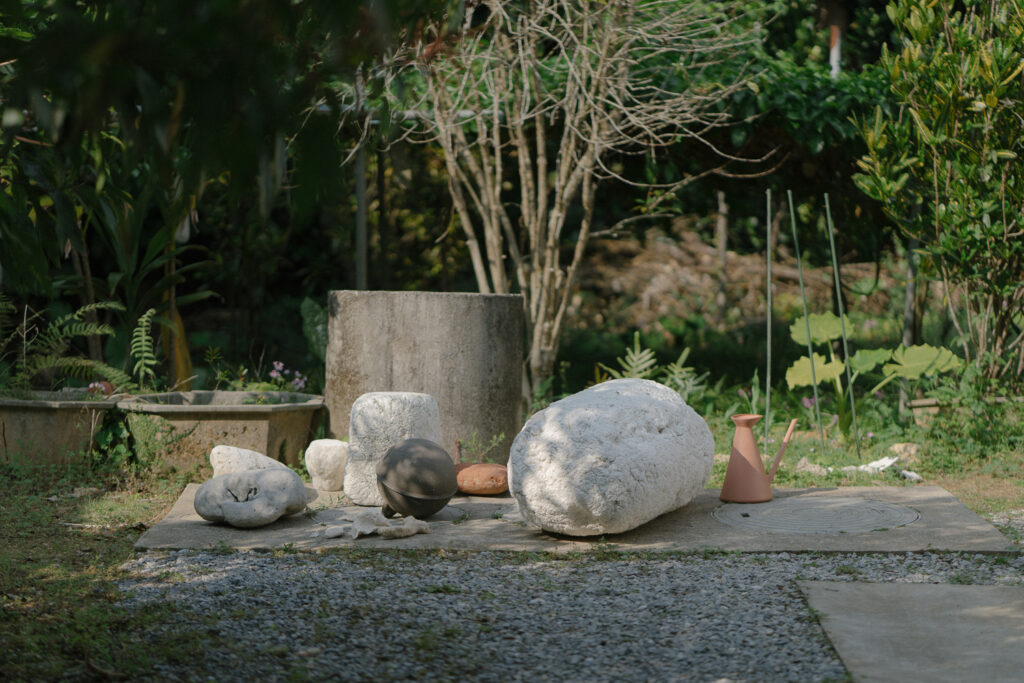
While Taiki Tanemura is speaking to me for this interview, a small hand extends into his line of vision. By the window is a tower of round stones that had been washed ashore. The tower collapses, obscuring a big healthy mango tree. “No, no!” echoes Taiki’s scolding voice, although it sounds more amused than angry. His daughter Tara—named from the wish for a “whole lot of good”—dashes off toward her mother, Ko Ozaki, who is bubbling with laughter just a few steps outside the studio-house.
This small family is full of hope and happiness, like passengers sharing a ride on a tiny boat. The father and mother make a living from artwork combining brass with various items that float ashore, under the name O’Tru no Trus.
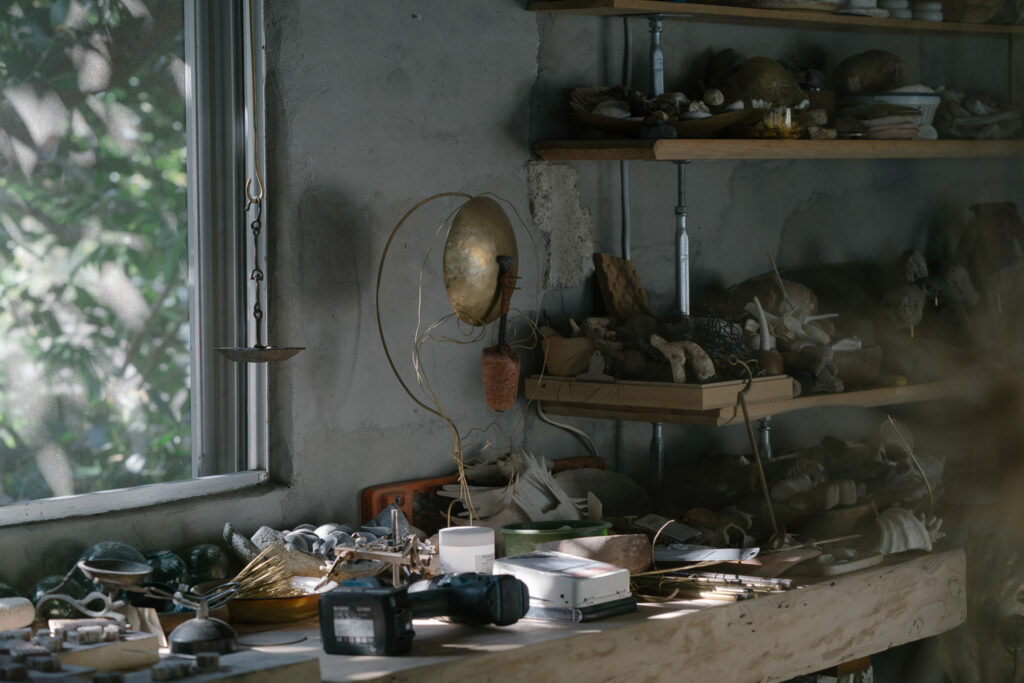
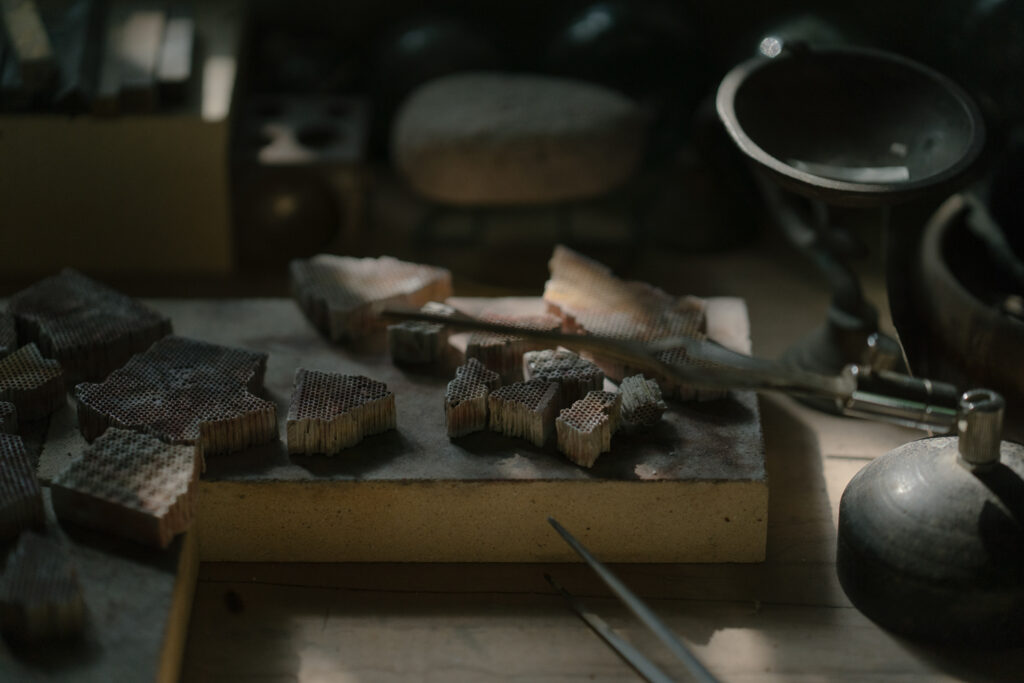
The relationship between Taiki and driftage goes back for over a decade. After graduating from university in Okinawa, he hopped into his sea kayak and embarked on a solo voyage. “There’s nothing like sea kayaking,” he says. “It’s elating!” Having literally become a drifter out at sea, he headed for his home city of Kobe.
First, he aimed for Okinawa Main Island. Then, he kept on paddling to the next island visible over the horizon, and the next and the next, until finally, he made his way past some 20 islands and across some 1,500 kilometers of sea to Kobe.
“Each beach along the way was my bedroom, my kitchen, my playground. If the sea was rough, then I couldn’t get back on my way, so I killed the time by arranging and stacking items that I found lying around. I was free to do whatever, since these were deserted islands, and no one else was there. If I really liked an item, I loaded it on my kayak and took it with me. So you see, this is why I have such an affinity for driftage.”
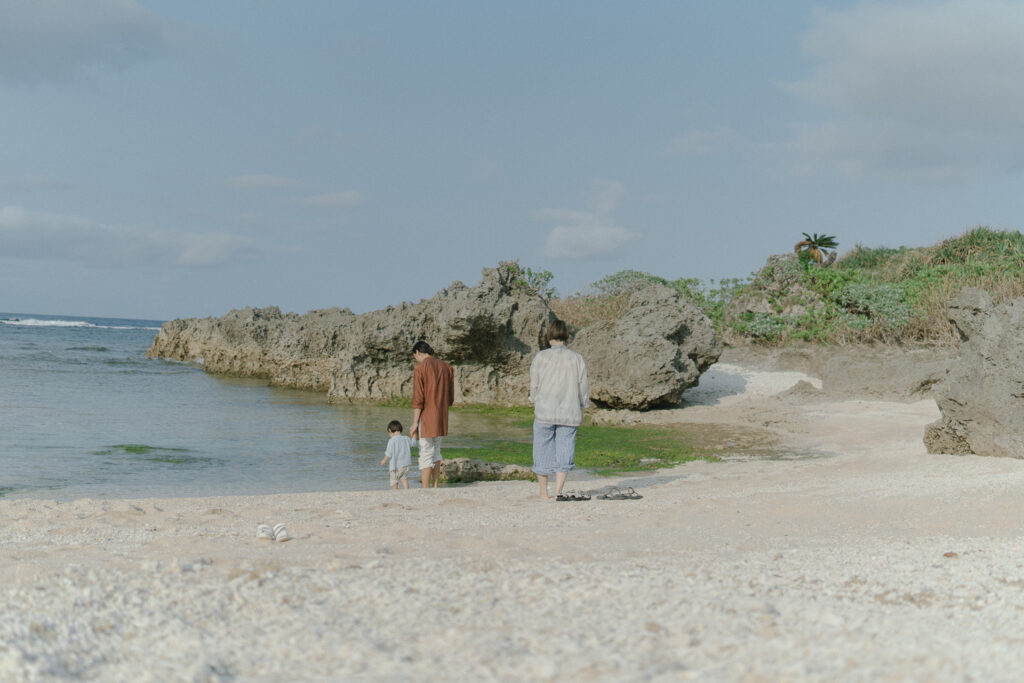
It was on this journey that Taiki met Ko. He originally comes from Kobe, and she from Tokyo. Together, they settled on Awajishima, an island in the Seto Inland Sea strange to them both. The move was easy and spontaneous, as if they were being carried by an invisible current. They figured things would work out. This was on the second date after they met.
“Taiki had only the sandals on his feet. All he owned apart from that was his trove of treasures,” Ko says with a cheerful laugh. The treasures in question, of course, consisted of driftwood, coral, smooth round stones, animal bones, and other items that had floated ashore.
The young couple set up a life together with only 60,000 yen in their pockets combined. Then, as luck would have it, they both lost their jobs. A friend who learned about their misfortune, however, gave them a helpful hint in a new direction: Why don’t they make some kind of art and put their work on display?
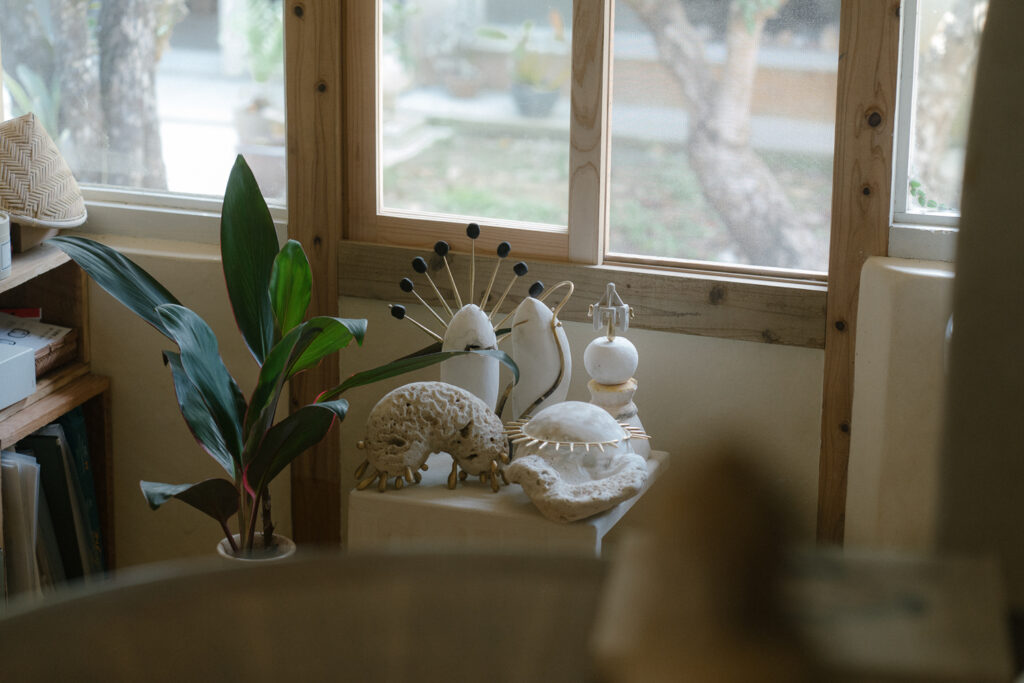
Yes! We’ll need to start from scratch, but we’ll do it!
The couple jumped at the offer. Looking back, suddenly finding themselves out of work presented a great opportunity. Taiki and Ko relish the memory now. We even made a toast!
Taiki had always wanted to put to good use the treasures he had collected over the years. Ko had been sure they could accomplish something wonderful together. And so they began their creative endeavor as the duo O’Tru no Trus.
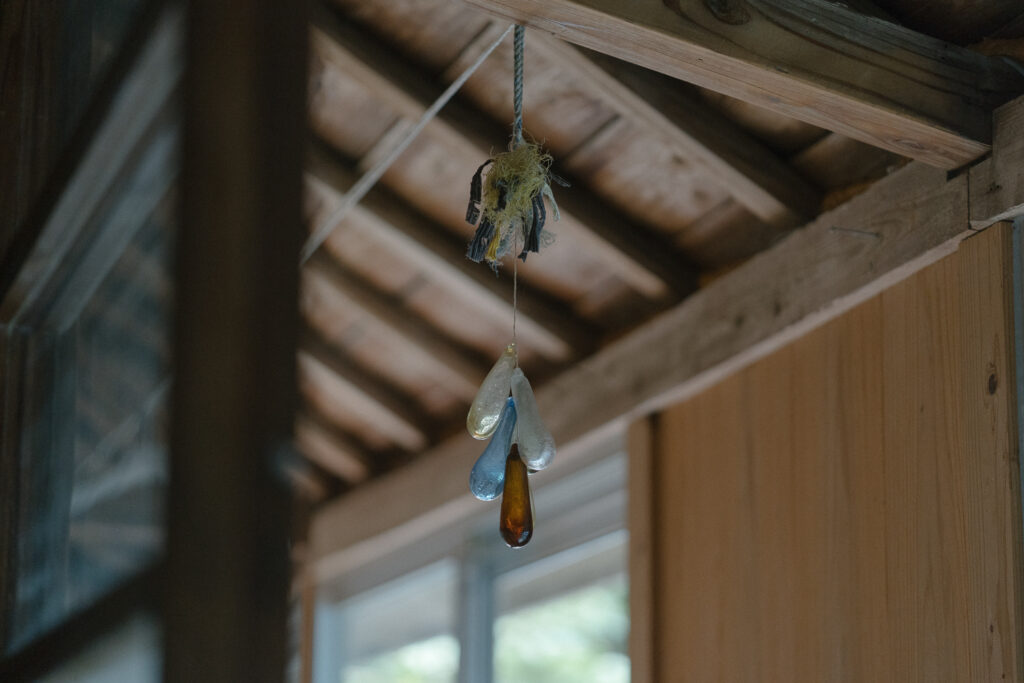
The process of creation kicks off with Ko’s rough sketches. She says this involves taking visual inventory of the items lining the studio shelves, and putting down on paper every idea that comes to mind. Because the sketches aren’t intended to be perfect blueprints, usually she completes them in one go. Any scribblings by Master Tara are left as is.
From there on, the ball is in Taiki’s court. He does the brazing and brass molding, and gives tangible shape to the lines on paper. But again, the lines don’t need to be exact. If a different set of lines emerge at this stage, that’s okay, because those lines are beautiful too.
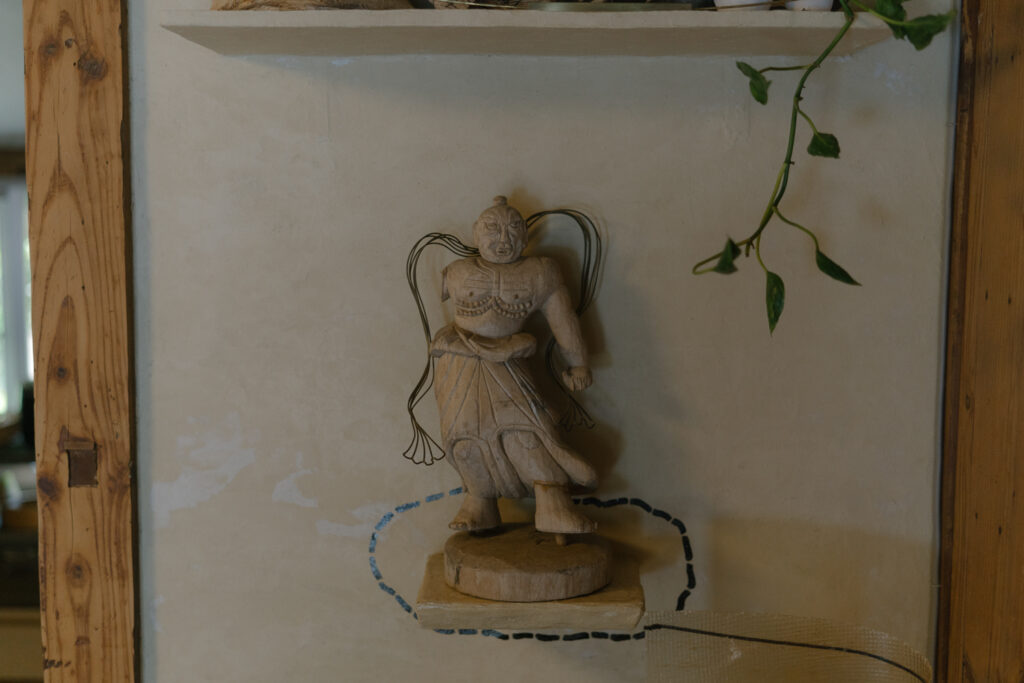
“If a wave of inspiration comes, then we’ll ride on it,” says Ko. “We don’t have any hard and fast rules. We’re fluid and flexible, because after all, we’re drifting too.”
Neither is Ko overeager about their finished work, which is described variously as pieces and objects of art. “I don’t mind how others see our work or what they say about it,” she says matter-of-factly. Talk about brave.
Taiki adds, “Because we share the work of creation, the finished piece is never all mine or all Ko’s. Besides, we don’t force ourselves to come up with ideas. Just as Ko said, if a wave of inspiration comes, we’ll ride on it. If the finished piece makes someone happy, then that makes us happy too.”
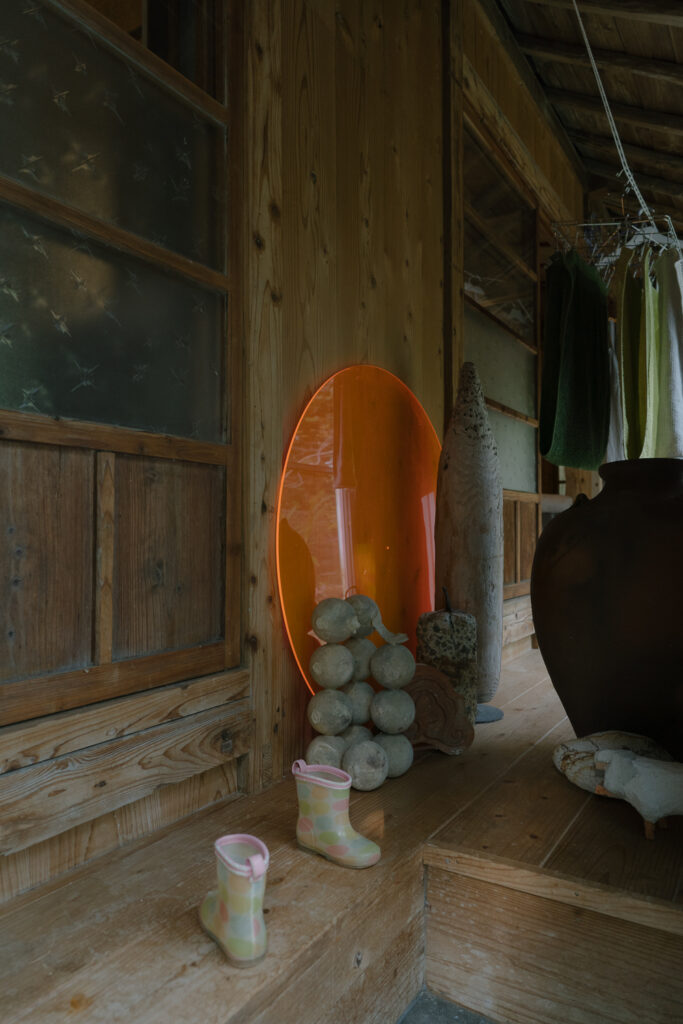
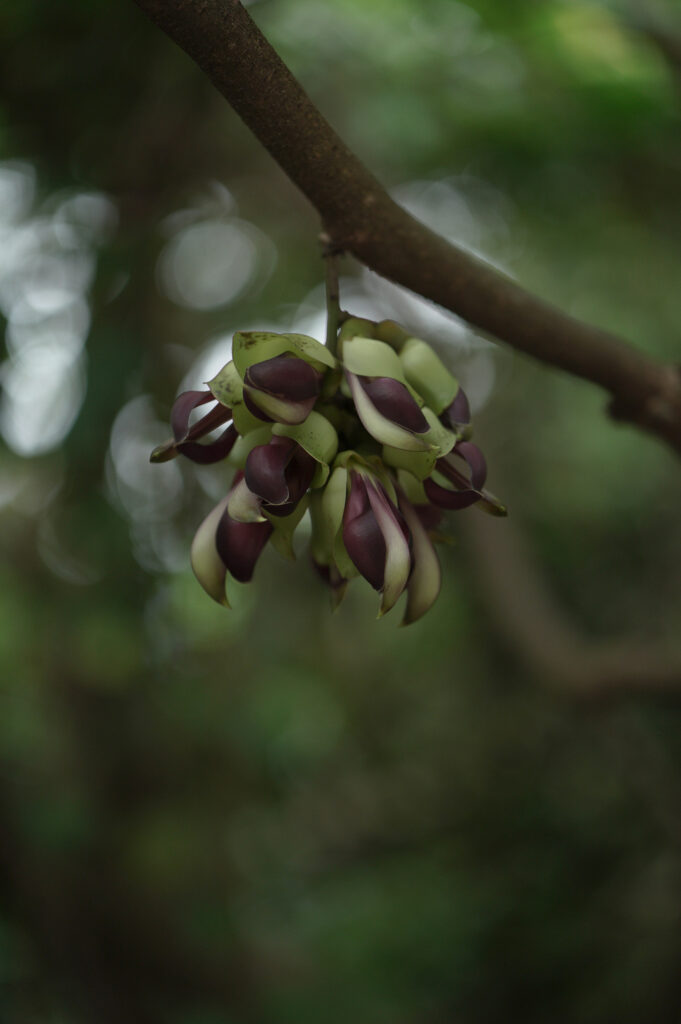
What they say, the words they choose, and even their outlook on life—everything about Taiki and Ko is unbelievably effortless. It isn’t that they don’t care. Evidently, they’ve reach a state of enlightenment that all things are meant to drift. Nothing has happened because of a decision on our part, right?
Smiling, Ko says they feel good about their current lifestyle, including that they’re under no obligation to continue as O’Tru no Trus. That said, Taiki adds, they’re likely to keep at it for some time.
The closer I look behind the scenes of O’Tru no Trus, the more I’m convinced that Taiki and Ko were meant to undertake this creative journey together. The journey is so full of miraculous, mythical stories too. The name O’Tru no Trus came to Taiki in a dream, for instance. The couple decided to live together after meeting only twice. When they collect an item at the beach, they chant “Danju kariyushi, haccho-yoi!“ (What an auspicious day. Thank you!) while clapping their hands in prayer toward the sea.
This is why I can’t help expecting their collaborative artwork to carry some meaning. The couple, however, refuse to elaborate. We could never arrive at any meaning on our own, and besides, we don’t see the point of describing our work in words.
“We asked a friend about this before, and were advised to say, please focus on our lifestyle instead,” says Taiki. “So that’s what we ask now.”
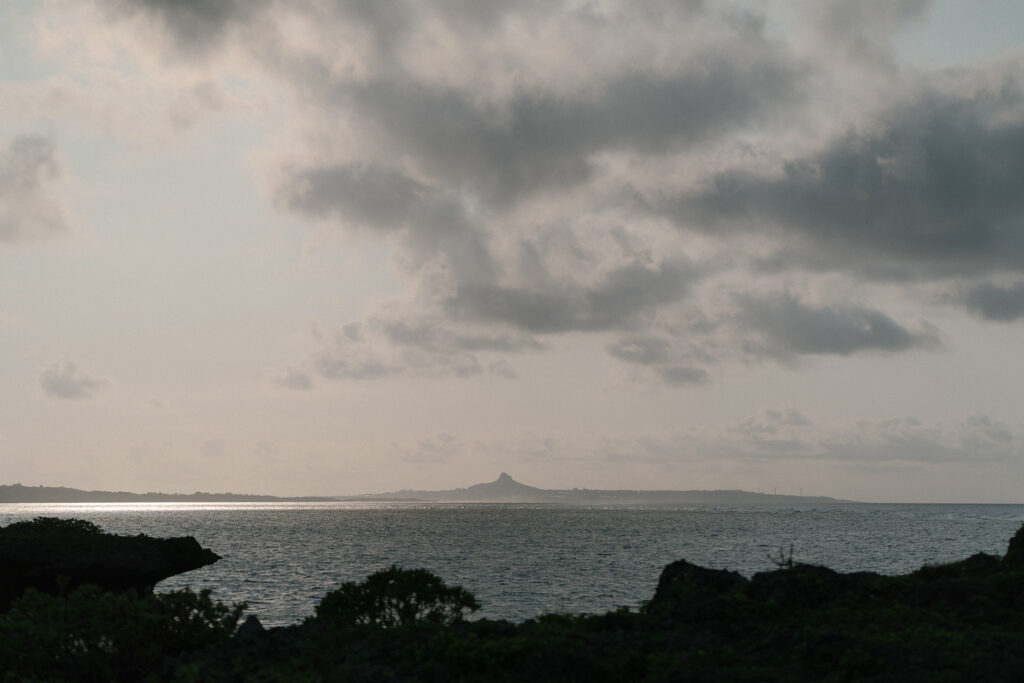
I read in a book that once in a blue moon, a poet emerges who expresses himself and the world with a tool other than words.
That’s my impression of Taiki and Ko. During my conversation with them, words come and go as steadily as the waves rise and fall, and yet the words are transient—they flow by and vanish like the breeze. We are supposed to be speaking the same language, and yet this couple’s language seems to be connected with the wider world—that’s where their voices seem to be coming from.
Taiki and Ko are perfectly self-reliant. They see what’s necessary and hear what’s necessary. They have their feet planted firmly on the ground, and they’re the happiest couple in the world for it.
This is the foundation on which the couple’s family life is built. This and the stories of the driftage encapsulated in their work as O’Tru no Trus.
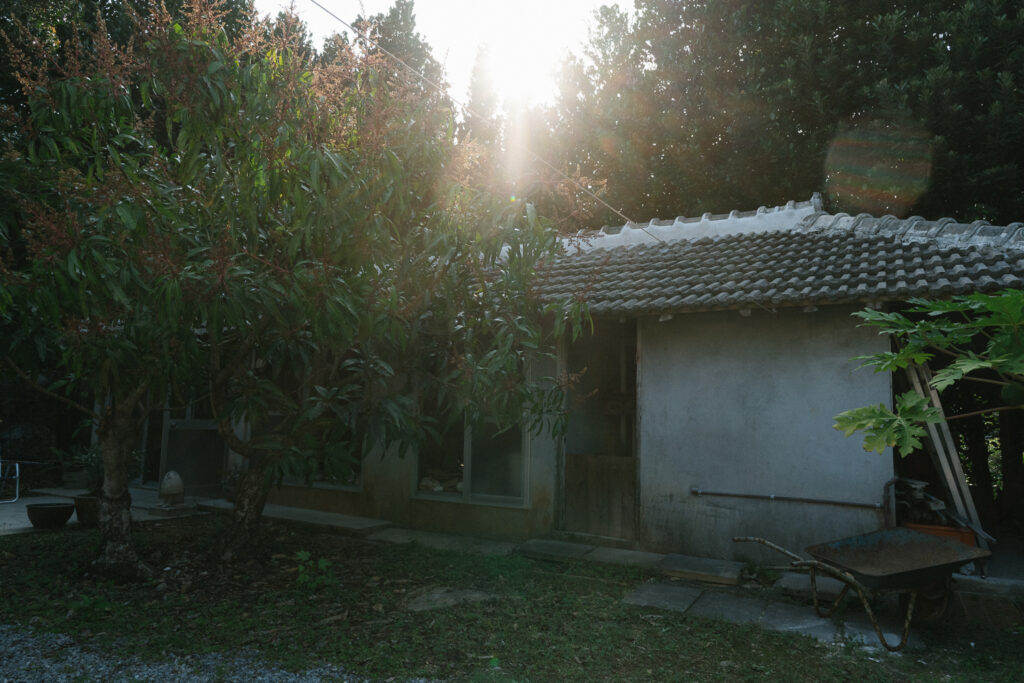
O’Tru no Trus
O’Tru no Trus is an artist duo based in Okinawa formed by Taiki Tanemura and Ko Ozaki. Tanemura and Ozaki travel the seas collecting driftage, and combine it with brass to create their artwork.











